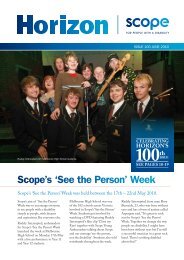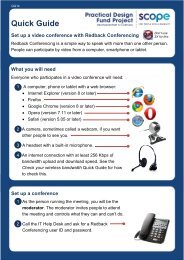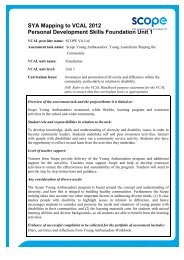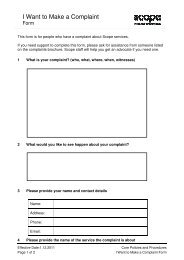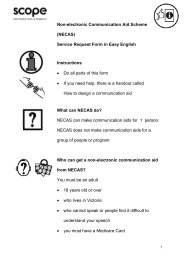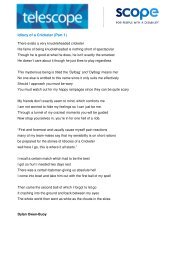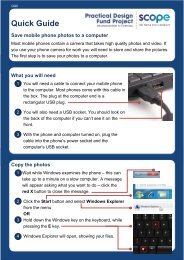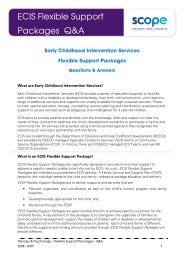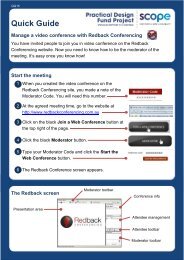Positive behaviour support Getting it right from the start
Positive behaviour support Getting it right from the start
Positive behaviour support Getting it right from the start
You also want an ePaper? Increase the reach of your titles
YUMPU automatically turns print PDFs into web optimized ePapers that Google loves.
48 <strong>Pos<strong>it</strong>ive</strong> <strong>behaviour</strong> <strong>support</strong>: <strong>Getting</strong> <strong>it</strong> <strong>right</strong> <strong>from</strong> <strong>the</strong> <strong>start</strong> - Facil<strong>it</strong>ators reference manual<br />
PowerPoint 69<br />
PowerPoint 70<br />
*<br />
*<br />
The checklist is not designed for use w<strong>it</strong>h children or for people who use speech or o<strong>the</strong>r formal<br />
communication systems competently as <strong>the</strong>ir main form of communication. The checklist<br />
may not be useful for some people w<strong>it</strong>h autism, where <strong>the</strong>re are communication skills that<br />
may be masked by learned helplessness (that is, when o<strong>the</strong>rs pre-empt <strong>the</strong> individual’s need<br />
to communicate; when o<strong>the</strong>rs communicate on behalf of <strong>the</strong> person or when <strong>the</strong> individual’s<br />
attempts to communicate are not listened to).<br />
Useful tips for completing a Checklist of Communication<br />
Competencies<br />
• Involve as many people as you can, who know <strong>the</strong> person well.<br />
• If you are unsure if <strong>the</strong> person can perform a particular skill, set up <strong>the</strong> s<strong>it</strong>uation and observe<br />
how <strong>the</strong> person responds.<br />
• Make sure you have placed <strong>the</strong> person at <strong>the</strong>ir best advantage; that is observing <strong>the</strong> individual<br />
when <strong>the</strong>y are most alert.<br />
• Set up <strong>the</strong> s<strong>it</strong>uation a few times to allow <strong>the</strong> person an opportun<strong>it</strong>y to demonstrate <strong>the</strong>ir skills.<br />
• Don’t forget to fill in details on <strong>the</strong> front page; <strong>the</strong> person’s name, <strong>the</strong> date and who helped<br />
complete <strong>the</strong> checklist.<br />
• Review <strong>the</strong> Checklist of Communication Competencies regularly (e.g. yearly) to evaluate<br />
progress.<br />
If you are undertaking or completing <strong>the</strong> Triple C Checklist for <strong>the</strong> first time, <strong>support</strong> and<br />
guidance <strong>from</strong> a speech pathologist or experienced pract<strong>it</strong>ioner should be sought. They will<br />
also be able to help if you are not sure how to interpret <strong>the</strong> results and what to do next after<br />
completing <strong>the</strong> checklist.<br />
Differences between intentional and unintentional communicators 12<br />
up ua ii sb se<br />
preintentional<br />
unintentional<br />
non-symbolic<br />
intentional<br />
intentional<br />
symbolic<br />
Symbolic means<br />
you can understand<br />
and use photos,<br />
words and signs<br />
1 2 3 4 5 6<br />
Triple C stages<br />
12. This information sheet was taken directly <strong>from</strong> <strong>the</strong> interAACtion manual (2004) InterAACtion© Strategies for<br />
Intentional and Unintentional Communicators. InterAACtion Copy<strong>right</strong> of CRC Bloomberg K, West, D<br />
& Johnson, H (2004),



